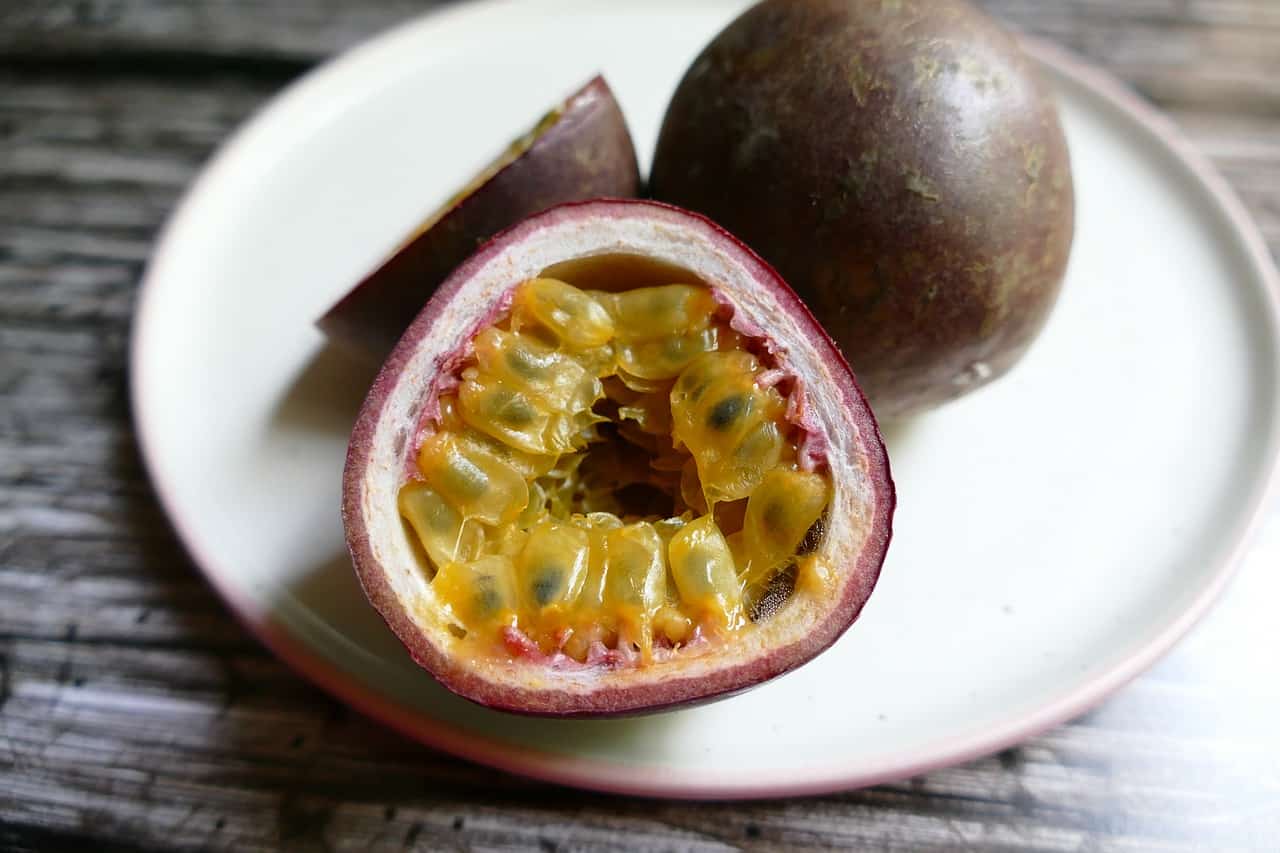Maracuya, which is commonly translated to “passion fruit”, is very well-loved in Costa Rica, and for good reason. You couldn’t be blamed for thinking that the maracuya named for its sweet, yet tangy and sour flavor. But passion fruit is actually named after the passion flower which is, in turn, named after the passion of Jesus Christ, particularly the last days of his life.
There are a few different varieties of passion fruits. The variety common in North America and Europe is a small, spherical purple fruit. But we’re interested in the maracuya that is enjoyed in Costa Rica and other parts of South America.
The Properties of the Maracuya
So, what does the maracuya look like? These fruits are typically yellow and look waxy. When they’re ripe, the skin might be slightly wrinkly. They’re egg-shaped and fairly small, only about 3 inches long. Much like the purple passion fruit, the insides consist of dark brown edible seeds surrounded by a juicy, yellow pulp.
The pulp is where most of that delicious tangy flavor is found, by the seeds are good to eat as well. The maracuya has a stronger taste than the purple variety of the passion fruit. It’s tart and has a very distinctive tropical flavor. It’s sweet enough as it is, but some people like to add sugar or honey.
It’s similar to another South American fruit called the granadilla. The granadilla is slightly darker, lighter, and has a translucent pulp instead of a yellow one. It’s also sweeter than the maracuya.
The Health Benefits of the Maracuya
The maracuya is delicious, which is reason enough to eat it whenever you can. But it’s also highly nutritious, especially for its size. It’s a particularly good source of vitamins A and C, which are both antioxidants that boost the immune system.
These fruits also contain iron, potassium, and other nutrients and minerals. These are all good for different reasons. For example, as well as boosting your immune system, the maracuya fruit improves eye, skin, and hair health.
As well as all those wonderful vitamins and minerals, these fruits are high in fiber and water. This means that they can help with digestion while hydrating you. That refreshing water content is particularly welcome during the summer.
How to Enjoy Maracuya
You can eat maracuya raw or use it as an ingredient in several delicious traditional dishes and drinks. First, we’ll look at eating it raw. If you’ve eaten a purple passion fruit before, you’ll find the process very familiar.
First, we have the skin. The skin of the maracuya is inedible, so don’t try to use that in anything. Arm yourself with a sharp knife and a spoon. Cut it open and scoop out the seeds and pulp, then enjoy. In Costa Rica, it can be simply eaten like this with a sprinkling of salt or sugar or used fresh to top a dessert. It’s also commonly used to make maracuya juice.
Here are some recipes popular in Costa Rica which demonstrate the wide range of uses for maracuya.
Maracuya Juice
Because maracuya is quite tart, most people add sugar when making maracuya juice. You can adjust the amount of sugar to your taste. Maracuya juice is refreshing and has plenty of those health benefits mentioned earlier.
Ingredients:
- 5 ripe maracuya
- 1 quart of water
- 1 cup of sugar
Method:
- Cut the fruits in half and use a spoon to scoop out all of the pulp and the seeds.
- Put the fruit in a blender and add the water and sugar.
- Pulse the mixture on high until everything is combined.
- Strain the liquid through a sieve to get rid of the seeds and pour it into a pitcher.
- Taste and add any water or sugar if necessary. Serve chilled or with ice.
Maracuya Ice Cream
Using maracuya juice, you can use it to make some really fantastic treats. Most people love ice cream, especially on a hot day, but this ice cream is tart and refreshing. Eat as it is or serve with warm chocolate cake.
Ingredients:
- 5-6 maracuya
- 2 cups of condensed milk
- ⅔ cup half and half
Method:
- Cut the maracuya in half and scoop out their pulp. Put the pulp into a blender along with ¼ cup of water. Blend the mixture and pour the juice through a strainer to catch the seeds.
- Then, return the juice to the blender along with the condensed milk and half and half. Blend it until smooth.
- Chill the mixture in the fridge for at least 4 hours.
- Put the mixture into an ice cream maker and follow the manufacturers instructions. Enjoy.
Maracuya and Mango Jam
This jam is sweet and tart, with some clear tropical flavors. You can also add some ginger to give it a hot kick.






